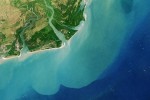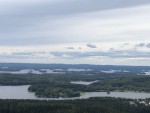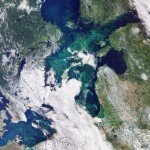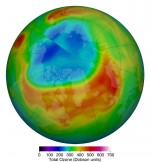
Tuesday, August 4th, 2020
The Mars 2020 mission is part of a long-term effort of robotic exploration of the Red Planet. The 2020 mission addresses high-priority science goals, including questions about the potential for life on Mars. The mission will look for signs of past microbial life itself. The mission also provides opportunities to gather knowledge and demonstrate technologies

Tuesday, July 21st, 2020
Over the course of nearly three decades, an uninterrupted series of satellites has circled our planet, diligently measuring sea levels. The continuous record of ocean height that they’ve built has helped researchers reveal the inner workings of weather phenomena such as El Niño and to forecast how much the ocean could encroach on coastlines around

Tuesday, July 7th, 2020
Although the Arctic is best known for frozen tundra, it also has a number of freshwater lakes that are covered in ice most of the year. But the length of time they are ice-covered is decreasing, and this is allowing methane to bubble into the atmosphere. Globally, lakes are responsible for nearly one-third of biogenic

Tuesday, June 23rd, 2020
Building heat will continue to blossom this week across much of the West, bringing several days of triple-digit heat for some communities and worsening drought for others. Cities such as Fresno and Bakersfield in the San Joaquin Valley of California topped out over the previous weekend around the 100 degrees Fahrenheit mark, with even more

Tuesday, June 9th, 2020
June 8, 2020, was World Oceans Day, which aims to raise awareness in protecting and restoring our oceans and its resources. Earth observing satellites continuously watch over the ocean to monitor and protect our environment. Covering more than 70 percent of Earth’s surface, the oceans are what makes this our “Blue Planet.” Our seas influence

Tuesday, May 26th, 2020
A recent pattern change has allowed stifling heat to build gradually across the southwestern United States. As the week beginning May 25, 2020, continues, meteorologists caution that the heat will further intensify over the region, which will allow numerous daily records from Sacramento to Phoenix to be challenged. Temperatures began to climb on May 24,

Tuesday, May 12th, 2020
Using the most advanced Earth-observing laser instrument NASA has ever flown in space, scientists have made precise, detailed measurements of how the elevation of the Greenland and Antarctic ice sheets have changed over 16 years. The results provide insights into how the polar ice sheets are changing, demonstrating definitively that small gains of ice in

Tuesday, April 28th, 2020
Ozone levels above the Arctic reached a record low for March, NASA researchers report. An analysis of satellite observations show that ozone levels reached their lowest point on March 12, 2020, at 205 Dobson units. Although such low levels are rare, they are not unprecedented. Similar low ozone levels occurred in the upper atmosphere, or

Tuesday, April 14th, 2020
Earth Challenge 2020 (Earth Challenge) launched on April 9, 2020, marking the 50th anniversary of Earth Day. This project creates a global expansion of open-source citizen science data and opportunities for civic engagement. Earth Challenge has two goals. First, to aggregate existing citizen science from around the world and make it interoperable, creating a coordinated

Tuesday, March 31st, 2020
Shorter and warmer winters lead to an increase in emissions of methane from northern lakes, according to a new study by scientists in Finland and the United States. Longer ice-free periods contribute to increased methane emissions. In Finland, emissions of methane from lakes could go up by as much as 60 percent. An international study
